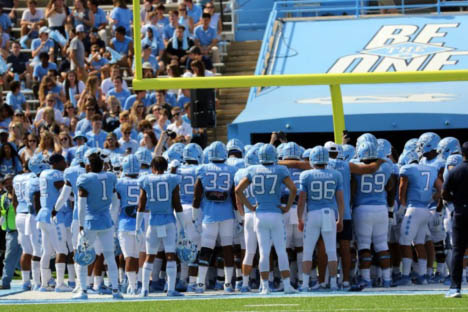
How to keep receiving federal financial aid throughout college
College is expensive, but the government tries to make the price of college more manageable by granting federal financial aid to students. After students fill out a FAFSA, they are awarded federal aid money. Some of this money needs to be paid back and some of it is gift aid that never has to be repaid.
Once a student has a financial aid award, and has accepted the loans and money offered for the year, he/she needs to understand the requirements for keeping that money.
“Your basic requirements is that you are making academic progress, which means you are completing 70 percent of the courses you attempt and that you are achieving a 2.0 cumulative grade point average,” said Eric Weems, Loyola University Director of Financial Assistance.
If a student remains in good standing with college or university for the enrollment time, he/she can keep receiving federal aid money.
Students also need to reapply for federal aid money each year and that is done through the FAFSA.
As for after college, that is when students have to be more careful and think about the debt they have incurred over their college years. Students who have federal loans, such as Stafford Loans and Perkins Loans, will need to start repayment on these loans after they graduate.
“You have six months after graduation to start paying back your loans,” Weems said. “That is a rule for everyone.”
According to the government’s student aid Web page, students have a grace period of six months to begin repayment on Stafford loans and nine months for Perkins Loans.
Students can choose a repayment plan that works for them when repaying their federal loans. Some common repayment plans are standard repayment, extended repayment and graduated repayment.
With the standard repayment plan, students will pay a fixed amount each month until their loans are paid in full. Monthly payments will usually be at least $50 and students will have up to 10 years to repay the loans.
Extended repayment is similar to standard repayment except that the repayment amount is over 25 years. Students’ monthly payments would be smaller with this plan.
Graduated repayment means that a student’s monthly payments would start out low and increase every two years. The length of the repayment period would be up to ten years. It is a good option for students who expect their income to increase over time.
Once students begin repayment it is important for them to pay their loans on time and in full according to their repayment schedule. Student loans are real loans, just as real as car loans or mortgage loans.
There is good news for students with financial grants: Those do not need to be paid back. That money is a gift from the federal government so that the students could attend college.
Federal work-study money that students may have earned in college is the student’s money to keep, but after graduation, students can no longer receive federal work study money.

















